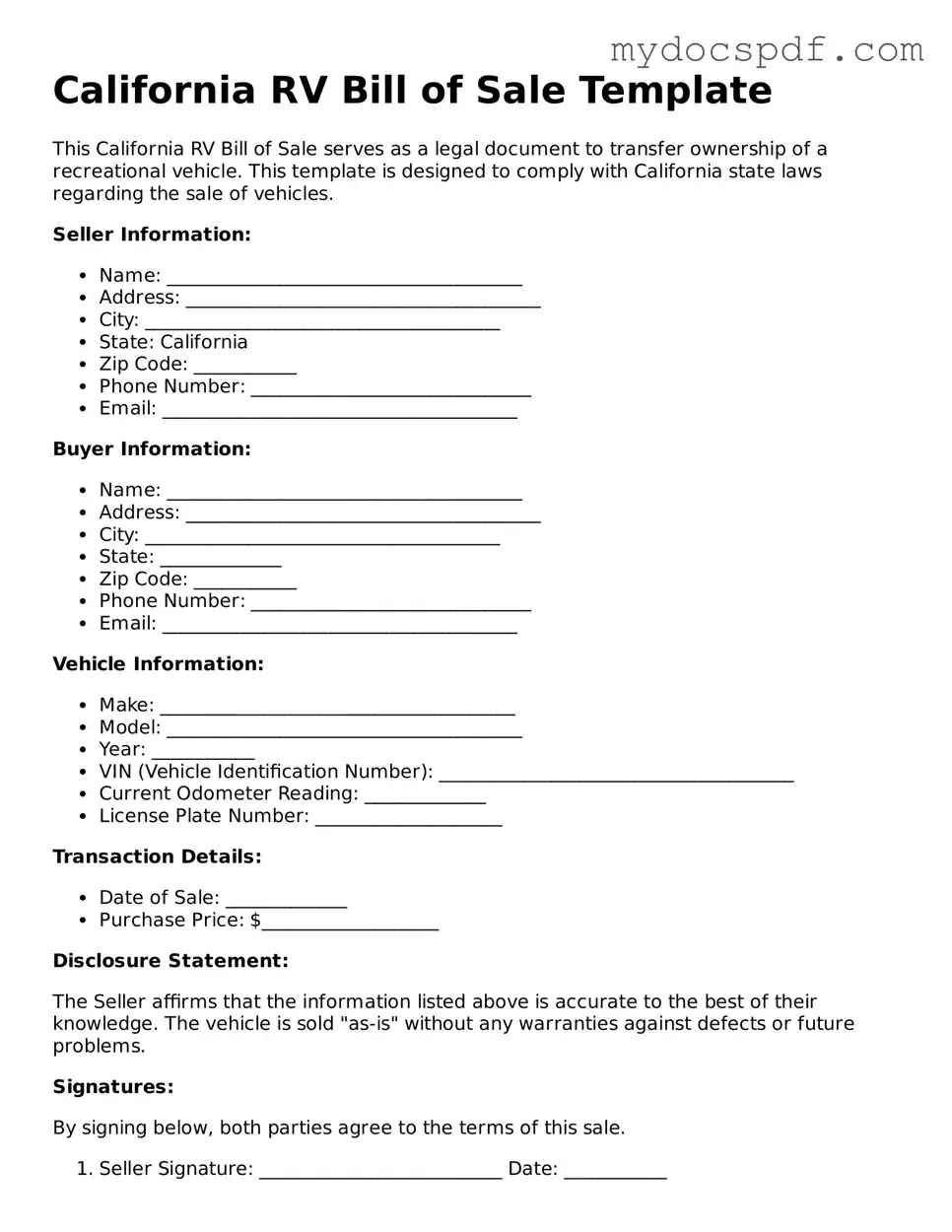When it comes to buying or selling a recreational vehicle (RV) in California, having the right documentation is essential for a smooth transaction. The California RV Bill of Sale form serves as a vital tool in this process, providing both parties with a clear record of the sale. This form typically includes important details such as the names and addresses of the buyer and seller, a description of the RV, including its make, model, year, and Vehicle Identification Number (VIN), as well as the sale price and date of the transaction. Additionally, it often contains sections for signatures, ensuring that both parties agree to the terms of the sale. Understanding how to properly fill out this form can help protect your interests and provide peace of mind, whether you're a seasoned RV owner or a first-time buyer. By documenting the transfer of ownership, the RV Bill of Sale not only serves as proof of purchase but can also be useful for future registration and titling purposes. This article will delve into the key components of the California RV Bill of Sale form, guiding you through its importance and how to complete it effectively.
